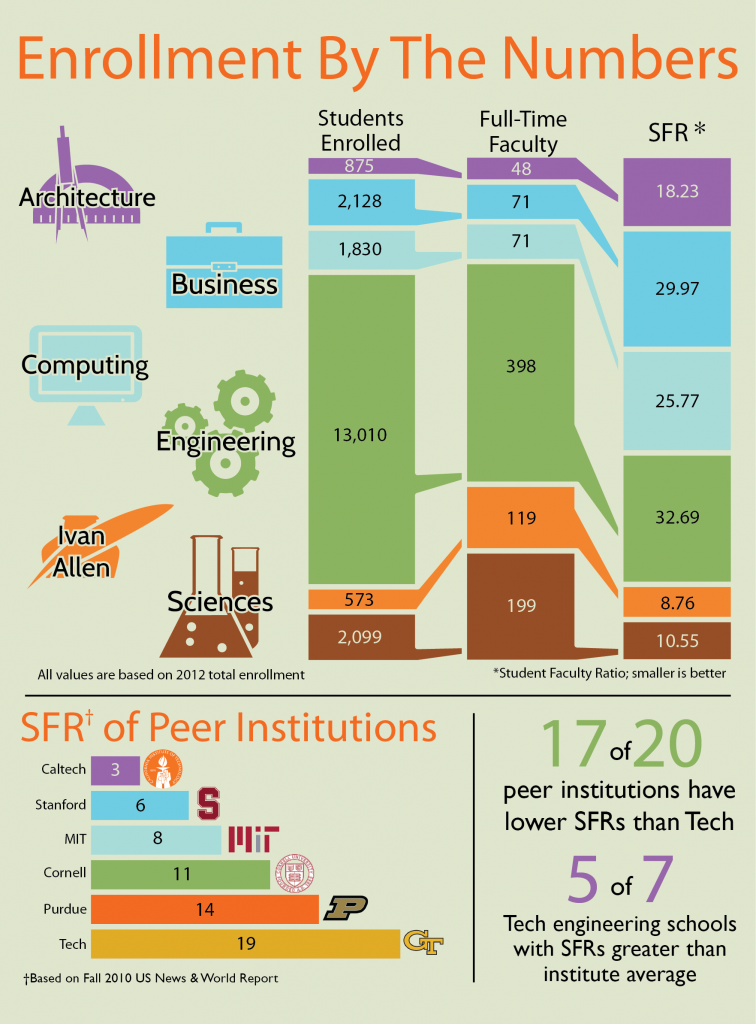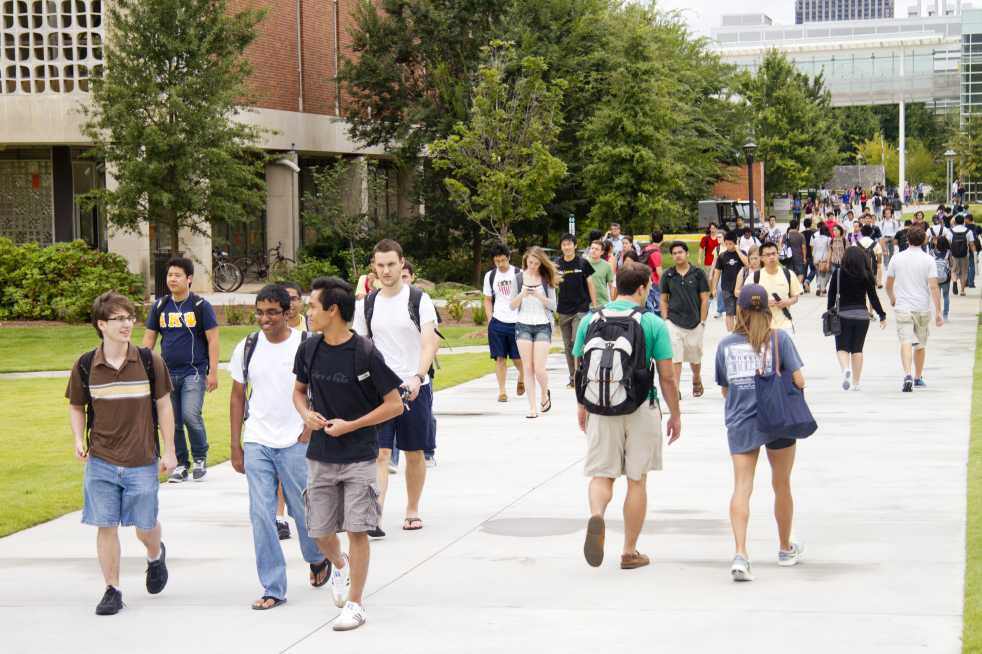As Tech’s budget comes to the legislature, the student-to-faculty ratio (SFR) is one of the key areas of focus on.
“It’s an important theme to us,” said Executive Director of Institute Budget and Planning Jim Kirk. “It’s a theme that we’ve hit on since I’ve been here, this slippage of the ratio.”
Since 1996, the total student-to-faculty ratio for the Institute has increased from 18.0 to 24.0, according to statistics released by Institute Planning and Resource Management.
“You keep adding students, but are you adding enough faculty to teach the students and are we maintaining a quality of instruction and assistance to students that you guys deserve?” Kirk said.
The student-faculty ratio can be computed in a variety of ways, but the most prominent is determined by the number of students present divided by the number of full-time tenure and tenure-track faculty.
John Leonard, the Associate Dean for Finance and Administration in the College of Engineering, believes that this number can be understood from multiple perspectives.
“Someone will say that well our student faculty ratio is above 30 and someone else will say…it’s 18. And both people are correct,” Leonard said. “Generally if you’re applying for college, student-faculty ratio is a big measure…what that doesn’t tell you is the balance across the different programs because you don’t go to a university—you major in something at a university.”
By colleges, the College of Engineering maintains the highest student-faculty ratio at 32.69, with the biomedical engineering department having the highest ratio on campus at 61.48 students to each faculty member, according to statistics provided by the Office of the Dean of the College of Engineering.
According to Gary May, Dean of the College of Engineering, the trend in what engineering major is the most preferred, which can change every five to six years, changes faster than the hiring cycles for faculty, which run on a different time scale.
The problem for engineering, then, is that it is unable to hire enough additional full-time faculty to accompany the large rise in student enrollment.
“The challenge is, students move at eight year cycles or six year cycles, depending on the market and where students are chasing jobs,” Leonard said. “Basically, the time to graduate is the period in that system and a faculty hire is for thirty years or forty years. Those systems move much slower and that’s what we’re trying to juggle.”
However, other departments across campus are hiring faculty at rates higher than their respective enrollments.
“By growing the tenured and tenure-track faculty, we hope to broaden and enrich our course offerings, allow for some smaller class sizes and continue to build a critical mass of world-class faculty who are recognized as leaders in their fields,” said Dean of the Scheller College of Business Steve Salbu.
The College of Business has experienced the largest overall growth in faculty over the past five years of any other college across campus, increasing its full-time faculty by 42 percent. At the same time, its undergraduate enrollment has increased by 27 percent.
“Given constraints on state funding, much of our hiring over the past five years has been self-funded, through revenue-generating programs as well as ambitious fundraising,” Salbu said. “Both the Scheller gift and other gifts to the College have contributed enormously to our faculty hiring over the past five years.”
The Ivan Allen College of Liberal Arts was the other college to hire faculty at a larger rate than its enrollment change, which increased its full-time faculty by 12 percent, although enrollment in the college actually decreased by 15 percent.
“The Ivan Allen college teaches all GT students,” said John Tone, Associate Dean of Undergraduate Studies at the Ivan Allen College of Liberal Arts.”Besides our major classes, we teach the english sequence, 12 hours of social sciences, six hours beyond english of humanities and in addition we teach students who are getting minors…Our’s is a blended mission where we have majors and a service mission to the rest of the Institute.”
To offset the rising student faculty ratio, individual departments have the ability to hire part-time faculty to offer additional sections for a course.
According to data provided by the Office of Institutional Research and Planning, nearly a quarter of the instructional faculty at Tech are non-tenure, non-tenure-track and visiting faculty.
However, funds for hiring these instructors are limited based on the budgets each department has to allocate. Although this may buffer the ratio, the current system provides no permanent solution to the high student faculty ratio.

